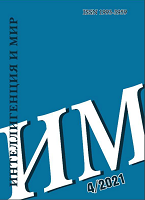Святые у трона: модели взаимодействия святых и светской власти в Латинской агиографии IV—VI вв
The Saints at the Throne: Models of interaction between saints and secular power in the Latin hagiography of the IV-VI centuries
Author(s): A. A. BabinaSubject(s): Christian Theology and Religion, Politics and society, Theory of Literature, History of Religion
Published by: Ивановский государственный университет
Keywords: model of interaction of the authorities; image of the saint; cult of saints; secular power; Church; Latin hagiographic literature; opposition of the authorities; Late Antiquity; bishop;
Summary/Abstract: The article analyzes the evolution of the model of interaction between saints and secular authorities in the Western Latin hagiography of the IV— VI centuries. The author studies the toposes used by hagiographers for its construction, and considers possible socio-political reasons for the transformation of this model. The research is based mainly on the historical and anthropological approach, which allows us to identify stable ideas about the saint for the late-antique society. In addition, the work uses the achievements of narratology, semiotics and, especially, imagology. Sources for the study are the Vita Martini of Sulpicius Severus, the Vita Ambrosii of Paulinus of Mediolana, the Vita Hilarii of Honoratus of Massilia, the Vita Germani of Constantius of Lyons, as well as the Vita Epiphani of Magnus Felix Ennodius and the Vita Caesarii. Apparently, the considered model of interaction between the spiritual and secular authorities undergoes a significant transformation at the end of the fifth century. It changes from a direct confrontation between them to an unconditional reverence by the secular authorities for the spiritual authority of the saints. At the same time, if the early lives of the IV century only indirectly contrasted spiritual and secular authority, then at the beginning of the V century this opposition becomes obvious. It is emphasized by the authors of the hagiographies by various linguistic and plot means. Since the end of the V century the confrontational model of interaction between the authorities is replaced by a compromise model, which uses its own set of tools. It merges with the new image of the saint-ambassador in hagiography. The author names the reasons for this phenomenon such as the crisis of the empire of the V century, the inefficiency of civil administration, the loss of centralized control by political elites and the creation of barbarian kingdoms, and their rulers still had to strengthen their power in the regions. All this, in turn, led to the growth of the authority of the Church and the strengthening of the position of the holy bishops in cooperation with the secular authorities.
Journal: Интеллигенция и мир
- Issue Year: 2021
- Issue No: 4
- Page Range: 72-93
- Page Count: 22
- Language: Russian

